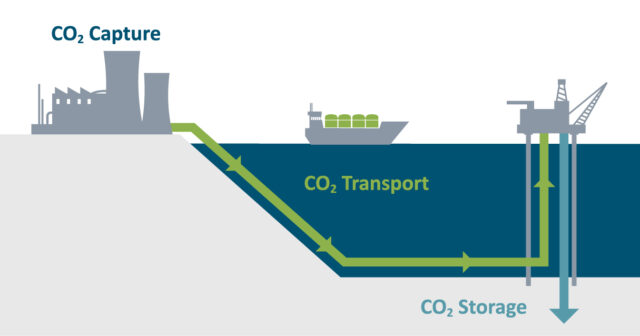Climate change is a global challenge that demands innovative solutions. One proposed solution that’s been gaining attention is Carbon Capture and Storage (CCS). But is it really the silver bullet to combat climate change, or could it be a false promise? In this blog post, we’ll break down CCS in simple terms and explore why some experts believe it might not be the ultimate solution we need.
Understanding CCS: The Basics
Carbon Capture and Storage is like a vacuum cleaner for carbon dioxide (CO2). Imagine your favorite power plant or factory is a giant CO2 factory, churning out tons of the greenhouse gas into the air. CCS steps in to capture that CO2 before it escapes into the atmosphere.

- Capture:
- Imagine capturing CO2 is like catching butterflies. There are different ways to do it, like putting a net after the butterflies (post-combustion), catching them before they fly (pre-combustion), or creating an environment where they can’t escape (oxy-fuel combustion).
- Transportation:
- Once we’ve caught the CO2 butterflies, we need to take them to a safe place. This involves transporting the captured CO2, usually through pipelines or ships, to storage sites.
- Storage:
- Think of storage sites as giant butterfly gardens, but underground. We carefully release the CO2 butterflies into these gardens, making sure they stay put and don’t escape back into the air.
Why Some Skepticism?
While CCS sounds promising, there are some concerns that make experts skeptical about its effectiveness as a long-term solution.
- Cost Concerns:
- Building and maintaining the CO2-catching vacuum cleaner can be expensive. Some argue that the money spent on CCS might be better used for more affordable and proven green technologies.
- Delaying the Switch to Green Energy:
- Critics worry that focusing too much on CCS might slow down our transition to cleaner and more sustainable energy sources like wind and solar power. It’s like fixing a leaky faucet instead of installing a more efficient water-saving system.
- Butterfly Escapes:
- There’s always a risk that some CO2 butterflies might escape from storage sites. If that happens, we’re back to square one with greenhouse gas emissions contributing to climate change.
- Energy Hog:
- The process of capturing and storing CO2 requires energy itself. It’s like using a lot of energy to catch those butterflies, making the whole operation less efficient.
In the grand scheme of things, CCS isn’t a simple superhero swooping in to save the day. It’s more like a sidekick – potentially helpful but not without its challenges. While it might play a role in reducing CO2 emissions, it’s crucial not to rely on CCS alone.
To truly tackle climate change, we need a mix of strategies. This includes investing, and tripling renewable energy capacities by 2030 as promised at COP28, improving energy efficiency, and phasing out fossil fuels. So, while CCS might be part of the solution, let’s not forget the bigger picture and work towards a greener and more sustainable future.
The post Unpacking Carbon Capture and Storage (CCS): Why It Might Not Be the Climate Savior We Hoped For appeared first on 350.

 3 months ago
32
3 months ago
32

